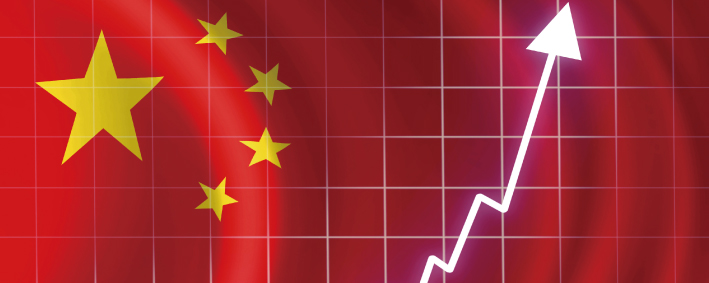 |
CCCH9017 China: Culture, State and Society
|
Course Description
The aim of this course is to understand China’s changing media landscape in post 1978 reform period. The course surveys the historical root of mass propaganda in the Chinese media during the Mao Era, analyzing the political, social and cultural dimensions of its development. This will be followed by an in-depth look at how Deng’s market liberalization policies have infused profit making mechanisms that reshaped media practices within the context of continued government control. Specific examples will be used to illustrate how the emergence of new media technology, fortified by Xi’s media convergence policy, has enabled the voice of the people to be heard, amplifying media’s role as a mass communication vehicle domestically and globally. Using the “people, propaganda, and profit” framework throughout the semester, the course will examine the implications of shifting relations between the state, market and the society on cultural or media production and reception.
This course utilizes media studies and sociology theories and engages students in a cross-disciplinary investigation on the social implications of the changing media environment in China. By analyzing various forms of media and communication, including newspapers, television, film, advertising, the arts, and new media, this course examines the subtleties and dynamic interplay of evolving political, economic and social forces and their prospects for the transformation of mass media and culture in China.

Course Learning Outcomes
On completing the course, students will be able to:
- Identify and describe major factors that transformed China’s media from a vehicle of mass propaganda to mass communication.
- Assess the limitations of unfettered media commercialization and profit making within continued Party ideological domination.
- Describe the emerging of the people’s voice via the rise of new media, other diverse media and popular culture forms and analyse its contribution to the development of China’s nascent civil society.
- Critically analyze the on-going debate concerning media autonomy and Party control by applying various media studies and sociology theories covered.
Offer Semester and Day of Teaching
First semester (Wed)
Study Load
| Activities | Number of hours |
| Lectures | 24 |
| Tutorials | 10 |
| Reading / Self-study | 26 |
| Assessment: Essay / Report writing | 50 |
| Assessment: Presentation (incl preparation) | 20 |
| Total: | 130 |
Assessment: 100% coursework
| Assessment Tasks | Weighting |
| Group project | 30 |
| Individual assignment | 40 |
| Tutorial presentation and participation | 30 |
Required Reading
- De Burgh, H. (2020). China’s media in the emerging world order (2nd ed.). London, England: University of Buckingham Press. From http://find.lib.hku.hk/record=HKU_IZ51633325550003414 [Chap. 1 “China Comes Out” (pp. 8-37)]
- Dong, T., Liang, C., & He, X. (2017). Social media and internet public events. Telematics and Informatics, 34(3), 726-739. From https://www-sciencedirect-com.eproxy.lib.hku.hk/science/article/pii/S0736585316302933?via%3Dihub
- Edwards, D., & Svensson, M. (2017). Show us life and make us think: engagement, witnessing and activism in independent Chinese documentary today. Studies in Documentary Film, 11(3), 161-169. From https://doi-org.eproxy.lib.hku.hk/10.1080/17503280.2017.1354504
- Fu, J. (2021). Digital Citizenship in China – Everyday Online Practices of Chinese Young People (1st ed.). From https://link-springer-com.eproxy.lib.hku.hk/book/10.1007%2F978-981-16-5532-6 [Chap. 2 “Citizenship in China” (pp. 39-63)]
- Harwit, E. (2017). WeChat: Social and political development of China’s dominant messaging app. Chinese Journal of Communication, 10(3), 312-327. From https://doi-org.eproxy.lib.hku.hk/10.1080/17544750.2016.1213757
- Lei, Y. W. (2016). Freeing the press: How field environment explains critical news reporting in China. American Journal of Sociology, 122(1), 1-48. From https://www.journals.uchicago.edu/doi/pdfplus/10.1086/686697
- Lou, S., & Cheng, H. (2017). Advertising in China: global implications and impacts. In D. K. Thussu, H. de Burgh & A. Shi (Eds.), China’s Media Go Global (pp. 259-273). Routledge. From http://find.lib.hku.hk/record=HKU_IZ51633635480003414
- Luo, A. J. (2015). Media system in China: A Chinese perspective. International Communication of Chinese Culture, 2(1), 49-67. From https://doi.org/10.1007/s40636-015-0012-3
- Meng, B. (2018). The politics of Chinese media: consensus and contestation. Springer. From https://link-springer-com.eproxy.lib.hku.hk/book/10.1057%2F978-1-137-46214-5 [pp. 105-125 “The Cultural Politics of the Entertainment Media”]
- Shao, G., Lu, J., & Hao, Y. (2016). Assessing China’s media reform. Asian Perspective, 40(1), 27-50. From https://search-proquest-com.eproxy.lib.hku.hk/docview/1766245405?accountid=14548
- Wang, M. (2017). The socially engaged practices of artists in contemporary China. Journal of Visual Art Practice, 16(1), 15-38. From https://doi-org.eproxy.lib.hku.hk/10.1080/14702029.2016.1179443
- Xu, J., & Sun, W. (2018). Media since 1949: Changes and continuities. In W. Wu & M. Frazier (Eds.), The SAGE handbook of contemporary China (pp.1172-1192). SAGE Publications, Los Angeles, Calif. From https://opus.lib.uts.edu.au/bitstream/10453/133149/1/Published%20version%20Chapter%2055.pdf
- Zhao, Y. (2013). China’s Quest for “Soft Power”: Imperatives, Impediments and Irreconcilable Tensions? Javnost-The Public, 20(4), 17-29.
Course Co-ordinator and Teacher(s)
| Course Co-ordinator | Contact |
| Dr L.F. Cho Department of Sociology, Faculty of Social Sciences |
Tel: 3917 4641 Email: lifcho@hku.hk |
| Teacher(s) | Contact |
| Dr L.F. Cho Department of Sociology, Faculty of Social Sciences |
Tel: 3917 4641 Email: lifcho@hku.hk |

